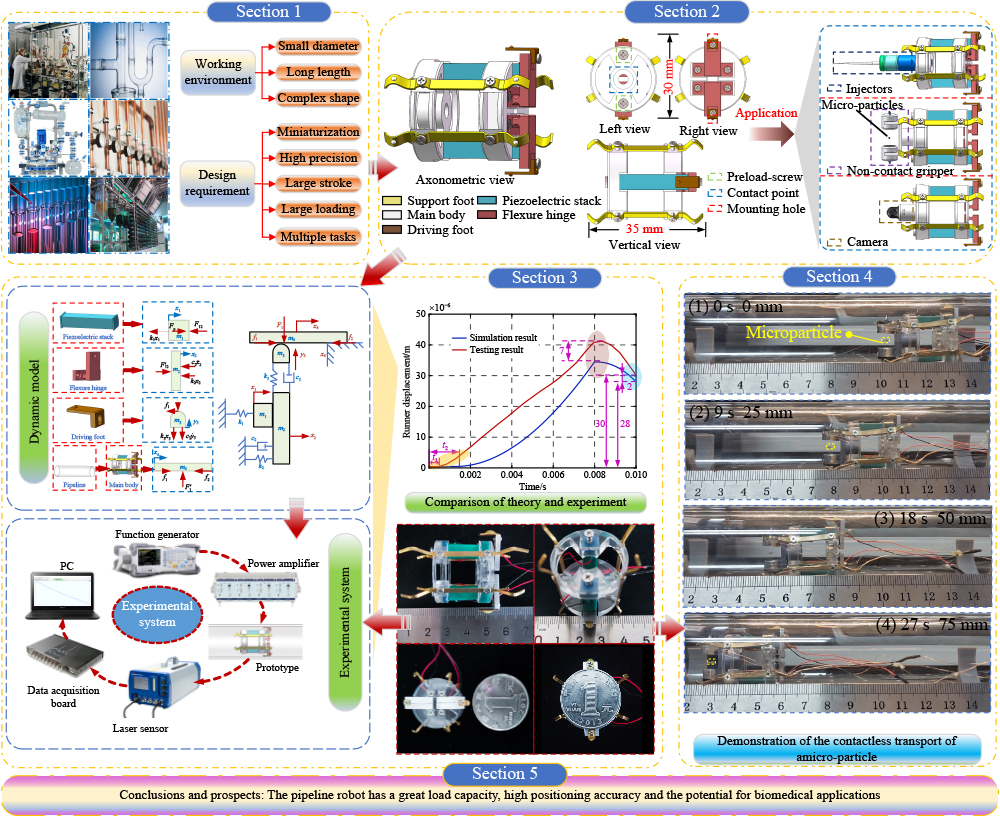Pipeline robots can be classified in accordance with the drive source as fluid driven, electric motor driven, hydraulic and pneumatic driven, electromagnetic driven, and functional material driven [
6,
7]. Depending on their characteristics, pipeline robots with different working principles play a crucial role in applications [
8,
9]. Fluid-driven pipeline robots, one of the first pipeline robots, are driven directly from the fluid without any additional power elements, and can only be driven effectively in large pipes with sufficient pressure [
10,
11]. The pipeline robot driven by electric motors is the most commonly used drive method and has the maximum drive speed and drive force in applications with larger pipe diameters [
12–
15]. However, it cannot enter the pipe or the driving speed and driving force are reduced when the pipe diameter is small due to the size of the motor and transmission device [
16,
17]. Hydraulic and pneumatic drives are mostly identical in terms of drive principle, and they can be applied to miniature-sized pipe robots. However, the essential hose for media transfer and control limits the use of pipe robots for long-distance inspection [
18–
22]. Electromagnetic field-driven pipeline robots are easy to miniaturize, especially the field-driven capsule robots using Helmholtz and Maxwell coils that can travel in the human intestine; however, their control system is more complicated, and the positioning accuracy is low [
23–
25]. The technology of using functional materials as the actuators of micro pipeline robots has received extensive attention in recent years, in which piezoelectric materials, shape memory alloys, and magnetostrictive materials present the characteristics of easy intelligence, integration, and miniaturization. Although the pipeline robots with memory alloy and magnetostrictive materials as actuators can realize locomotion in small pipes, their response speed and locomotion accuracy are relatively low and sensitive to ambient temperature due to the limitation of the characteristics of the actuators [
26–
29]. Piezoelectric materials have the advantages of small size, light mass, high displacement resolution, high energy density, and fast response [
30,
31]. The response speed, driving force, and control accuracy of miniature pipeline robots with piezoelectric materials are improved, which are better choices as the driving element [
32–
34].
















